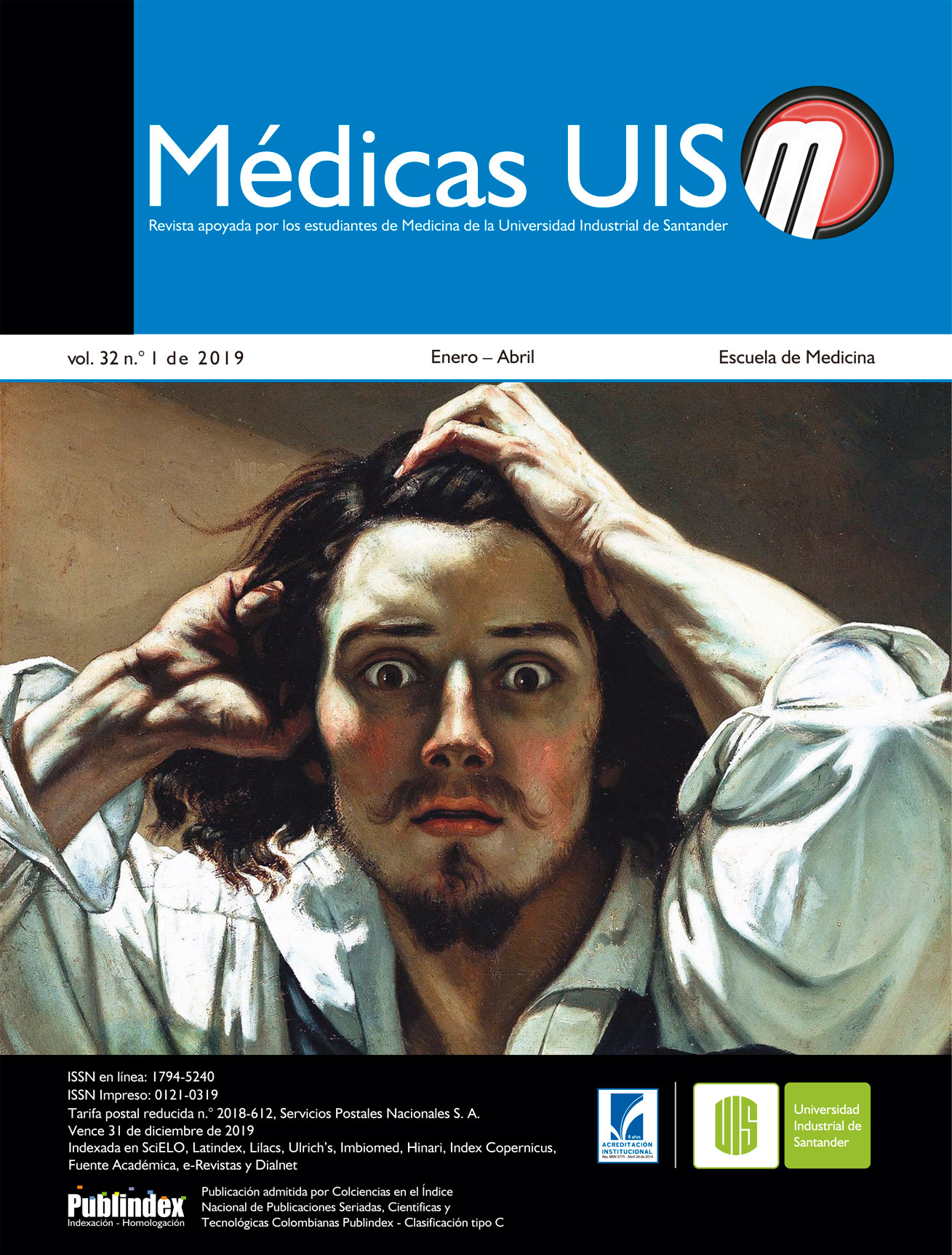Abstract
Acute appendicitis in pediatrics presented in scholar and adolescent ages have as its main complication an intraabdominal abscess. Moreover, acute lobar nephronia is a localized infection in the renal parenchyma. There are no cases reported about nephronia as a consequence of acute non-perforated appendicitis. This case describes a preadolescent presenting abdominal pain, vomit and fever, six days after acute appendicitis. She was admitted with signs of systemic inflammatory response syndrome, so antibiotic therapy was started. After three days there was no clinical improvement, whereby an abdominal ultrasound was performed, which reported injury in the right kidney suggestive of acute lobar nephronia and an hepatic abscess of VI and VII segments. Broad spectrum of antibiotic therapy was started with adequate clinic response. Acute lobar nephronia should be considered when studying acute appendicitis complications, given it’s aggressive behavior, accelerated progression to sepsis and frequent association with renal scarring. MÉD.UIS.2019;32(1):33-7
References
2. Hadley GP. Intra-abdominal sepsis-epidemiology, aetiology and management. Semin Pediatr Surg. 2014;23(6):357-62.
3. Bundy DG, Byerley JS, Liles EA, Perrin EM, Katznelson J, Rice HE, et al. Does This Child Have Appendicitis? JAMA. 2007;298(4):438-51.
4. Rentea RM, St. Peter SD. Contemporary management of appendicitis in children. Adv Pediatr. 2017;64(1):225-51.
5. Bibalo C, Apicella A, Guastalla V, Marzuillo P, Zennaro F, Tringali C, et al. Acute lobar nephritis in children: not so easy to recognize and manage. World J Clin Pediatr. 2016;5(1):136-42.
6. Yang CC, Shao PL, Lu CY, Tsau YK, Tsai IJ, Lee PI, et al. Comparison of acute lobar nephronia and uncomplicated urinary tract infection in children. J Microbiol Immunol Infect. 2010;43(3):207-14.
7. Singh M, Kadian YS, Rattan KN, Jangra B. Complicated appendicitis: analysis of risk factors in children. Afr J Paediatr Surg. 2014;11(2):109-13.
8. Bonadio W, Brazg J, Telt N, Pe M, Doss F, Dancy L, et al. Impact of in-hospital timing to appendectomy on perforation rates in children with appendicitis. J Emerg Med. 2015;49(5):597-604.
9. Pham XBD, Sullins VF, Kim DY, Range B, Kaji AH, de Virgilio CM, et al. Factors predictive of complicated appendicitis in children. J Surg Res. 2016;206(1):62-6.
10. Serres SK, Cameron DB, Glass CC, Graham DA, Zurakowski D, Karki M, et al. Time to appendectomy and risk of complicated appendicitis and adverse outcomes in children. JAMA Pediatr. 2017;171(8):740-6.
11. Poudel R, Bhandari TR. Risk factors for complications in acute appendicitis among paediatric population. JNMA J Nepal Med Assoc. 2017;56(205):145-8.
12. Lee SL, Islam S, Cassidy LD, Abdullah F, Arca MJ. Antibiotics and appendicitis in the pediatric population: an american pediatric surgical association outcomes and clinical trials committee systematic review. Pediatr Surg. 2010;45(11):2181- 5.
13. Van Rossem CC, Schreinemacher MH, Treskes K, Van Hogezand RM, Van Geloven AA. Duration of antibiotic treatment after appendicectomy for acute complicated appendicitis. Br J Surg. 2014;101(6):715-9.
14. Sheu JN. Acute lobar nephronia in children. Pediatr Neonatol. 2015;56(3):141-2.
15. Cheng CH, Tsau Y, Chang CJ, Chang YC, Kuo CY, Tsai IJ, et al. Acute lobar nephronia is associated with a high incidence of renal scarring in childhood urinary tract infections. Pediatr Infect Dis J. 2010;29(7):624-8.
16. Granados Molina A, Espino Hernández M, Gancedo Baranda A, Albillos Merino JC, Álvarez-Cortinas JF, Molina Amores C. Nefronía focal aguda bacteriana: diagnóstico, tratamiento y
evolución. An Pediatr (Barc). 2007;66(1):84-6.

This work is licensed under a Creative Commons Attribution 4.0 International License.
Copyright (c) 2019 Revista Médicas UIS
